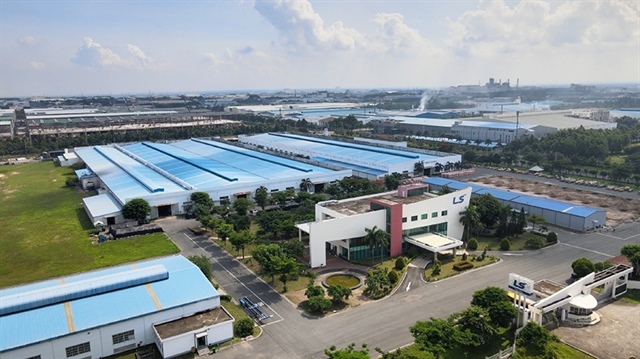Vietnam automotive industry to grow fastest in ASEAN: Thai industry insider
Vietnam automotive industry to grow fastest in ASEAN: Thai industry insider
Vietnam’s automotive industry will enjoy the fastest growth in Southeast Asia in the next 20 years because of rising demand and help from the government, Vichai Jirathiyut, president of the Thailand Automotive Institute, said at a recent meeting in Ho Chi Minh City.

The Vietnamese automotive industry is forecast to churn out 220,000 units annually by 2020 and 1.5 million units by 2035 given strong support from the central government, Vichai at the meeting on Thursday last week.
The aging 67-million-strong Thai market buys around 880,000 units per year, so the 90-million-plus market of Vietnam with a younger age group will have higher demand for personal vehicles in the future, he said.
Official figures from the Vietnam Automobile Manufacturers' Association (VAMA) showed that automotive sales in Vietnam reached 157,810 vehicles in 2014, up 43 percent compared to 2013.
Last year, sales of personal cars increased by 43 percent year on year, topping 100,000 units, while sales of trucks grew by 42 percent in comparison with 2013 to hit nearly 57,371 vehicles, the VAMA said in a report in January this year.
According to the Vietnamese Ministry of Industry and Trade, the local automotive industry will produce 200,000 vehicles in 2015, an annual growth rate of 4.4 percent.
In the Southeast Asian region, Thailand and Indonesia currently have a very competitive automotive industry but this will gradually change, Vichai said.
The Thais are focusing on manufacturing pickup cars weighing less than one metric ton and eco-friendly vehicles, for Thailand has the highest vehicle emissions standards regionally.
The country can help Vietnam when it is moving upward in the value chain of the automotive industry because Thai manufacturers hold many technological advancements, the president of the Thailand Automotive Institute added.
Thailand’s automobile production topped 2.8 million units last year with 18 foreign-owned assemblers including Honda, Isuzu, Mitsubishi, BMW, GM, and Tata, he said.
At this time, the Thai automotive market is plummeting. Last month, the Thai government reported that domestic auto sales in February fell 11 percent year on year, marking the 21st consecutive month of decline.
However, Vietnamese analysts and automotive businesses are worried that Vietnam will be increasingly dependent on foreign vehicles as import taxes levied on automobiles will sharply drop or even be exempted following the roadmap of tariff reduction commitments of the ASEAN Agreement on Trade in Goods, which will take full effect by 2018.
With the low localization rate of Vietnam’s automotive industry, only at 10-30 percent depending on each type of vehicle, when the import tariff on foreign-made vehicles, or completely built units (CBUs), is lowered to 0 percent in 2018, the importation of spare parts for assembling in Vietnam will obviously be more expensive than CBU imports from Thailand or Indonesia.
Data from the Vietnam Customs under the Ministry of Finance showed that the total number of automobiles imported from India in the first two months of 2015 reached 4,363 units, topping the list of the 12 countries and territories from which Vietnam are importing automobiles.
In 2014, the Southeast Asian country imported over 13,300 automobiles of all kinds from India, representing approximately 17.5 percent of the total number of imported vehicles of over 71,000 units.
During the same period last year, the number of automobiles shipped from India was only 864 units, around 20 percent of this year’s count.
However, when considering the import value, topping the list was Chinese-made vehicles.
Specifically, the value of CBU imports from China in January-February totaled US$114 million, followed by South Korea ($66.9 million), Japan ($38.3 million), Thailand ($32.4 million), and India ($24.8 million).


























